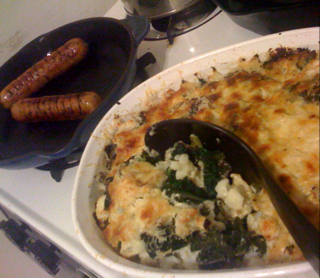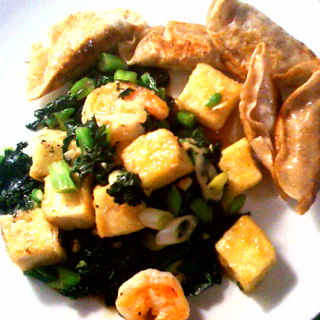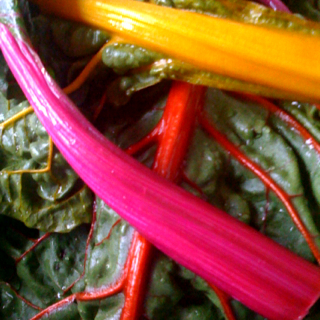 I've been feeling a bit disappointed that I haven't been writing more, but I've realized two things: I've been traveling a good deal (Honduras trip pics coming soon! As soon as we get a new computer.). And, all I want to do whenever I have a spare minute is cook. So I've decided to start documenting my adventures in cooking as a way to combine my interests and keep up my blog.
I've been feeling a bit disappointed that I haven't been writing more, but I've realized two things: I've been traveling a good deal (Honduras trip pics coming soon! As soon as we get a new computer.). And, all I want to do whenever I have a spare minute is cook. So I've decided to start documenting my adventures in cooking as a way to combine my interests and keep up my blog.
As I wrote earlier, I've developed a curiosity about ecofriendly cooking (local food, reduced packaging, less meat, sustainable cooking tools), healthy eating (organic whole foods, superfoods, less meat), and thriftiness--what I'm thinking of as "depression-era cooking"--using inexpensive ingredients like sweet potatoes and dried beans, using minimal packaged foods, and cooking nearly every meal.
This combination has stimulated my creativity, sent me diving into new recipes and old-timey guides, and assuaged some if my worries and discomforts. For example, I know that nonstick pans are supposed to be dangerous, if they crack and the coating starts breaking off. Ours has, but I've been hesitant to buy yet another pan and send yet another item to the landfill.
And then I was reading this memoir, Little Heathens, about growing up on an Iowan farm in the Great Depression. They cooked almost everything in cast iron pans. We've had a cast iron skillet for years, but hadn't cared for it very well and it needed seasoning. So this past week, I seasoned it multiple times, with drippings from some amazing bacon I bought in Grand Central Market, at the new meats stand run by Murray's Cheeses.
And it worked so well that i tried it on a "pretreated" Le Creuset skillet that has always been too sticky--so much so that I stopped using it, and always had little flashes of resentment whenever I saw the pan, feeling that it had been a big waste of money. No longer! Now both of the skillets work great!
I know it's nothing like forging a living on a family farm in the great Depression, but there's something satisfying about refurbishing and reusing, and opting out of the "buy new", disposable way of life we've become accustomed to, even if only in a small way.
In upcoming posts, I'll describe how to make batches of breakfast burritos in advance (yummy, convenient and cheap!), how to make sure you don't waste that leftover fresh cilantro, and what to do to salvage mealy winter tomatoes.
Pictured: cauliflower and kale gratin, seasoned with brown mustard vinaigrette, and organic chicken and spinach sausage. Delicious!
getting thriftier...
 I'm on the lookout for ways to be thrifty...and it's gratifying that there is commonly an overlap between saving money and being green. A few small changes can make a pretty significant difference. The biggest challenge is letting go of rushing--it takes more time to be thrifty, at least that's what I've found so far.
I'm on the lookout for ways to be thrifty...and it's gratifying that there is commonly an overlap between saving money and being green. A few small changes can make a pretty significant difference. The biggest challenge is letting go of rushing--it takes more time to be thrifty, at least that's what I've found so far.
Here's a couple examples of what I've been doing--what about you?
•Cooking! I have been cooking up a storm, bringing my lunch, and eating out less and less. We got a great cookbook (cooks illustrated 30 minute meals) and having been trying new recipes every week.
•Eating way more veggies. I have been eating meat only rarely, relying on beans, eggs, soy and seitan for my everyday protein. Veggies are cheap and nourishing, and I'm learning how to prepare them more quickly. And they are much less taxing on the environment. Then, when you add a few shrimp to a dish, it's a treat. Above is a recent dish: stirfried kale and tofu, with a few shrimp and storebought dumplings.
•Buying dried beans instead of canned! Then finding a couple new recipes for the beans over the week. And fewer cans to recycle.
•Buying whole--unprocessed--foods. A plain head of lettuce is cheaper than a plastic box of prewashed greens, and there's less plastic to recycle or throw away. Loose dried fruit, seeds and nuts are cheaper than snackbars.
I'm thinking about making my own yogurt, too--apparently, you can just add half a cup of starter yogurt to a batch of milk, and it will turn into yogurt over a few days. I love yogurt and fruit, but there's always a little bit of regret when I eat it because the containers aren't recyclable through the city's program. However, I just read somewhere that Whole Foods will take some #4 and #5 plastics...
I've also started using one of those tin water bottles (don't leach chemicals from plastic into water, no trash!) for the last few months, and I love it. I carry it around, empty much of the time, then fill it with tap water when I need to. It's lightweight, and it's paid for itself many times already.
Next: going to start making my own household, nontoxic cleansers. And going to start learning how to cook with cheap, sustainably harvested fish, like sardines and squid.
learning to love greens
 So I've never been a veggie expert or cheerleader, but I've been trying to eat better for the last few years, and especially the last few months. I think of Michael Pollan's mantra whenever I go shopping, which goes something like this: eat everything, not too much, mostly greens.
So I've never been a veggie expert or cheerleader, but I've been trying to eat better for the last few years, and especially the last few months. I think of Michael Pollan's mantra whenever I go shopping, which goes something like this: eat everything, not too much, mostly greens.
So I bought us some rainbow chard, and it was just beautiful! Here's how I prepared them, using a recipe I found on the Kitchn blog: Sauteed mushrooms, onions; set aside. Separated chard leaves from stems, then chopped leaves into smaller pieces. Blanched leaves in salted water, with red chili flakes in it, then drained leaves, mixed with mushrooms, onions. Then added half cup of breadcrumbs, half cup grated jack cheese, and three beaten eggs. Salt and pepper in mix, then bake for 25 min at 350.
Comes out like a casserole--delicious way to get some greens in you! Next, I'm turning to the Kitchn blog again for a chard stems recipe--basically baked with parmesan cheese...I will report on the outcome!
